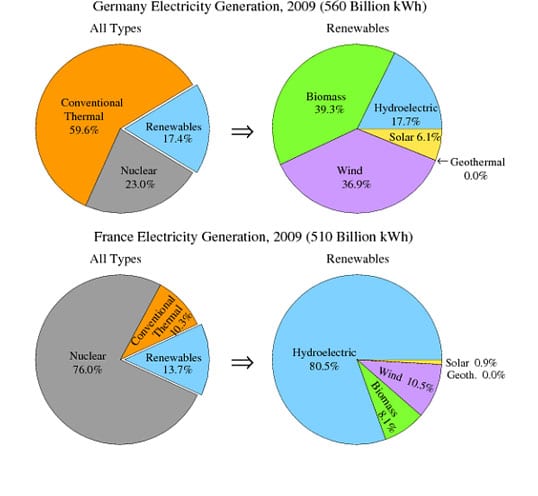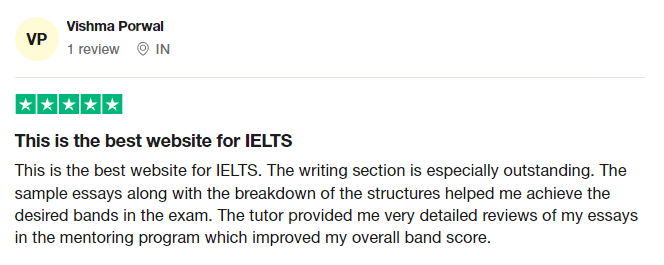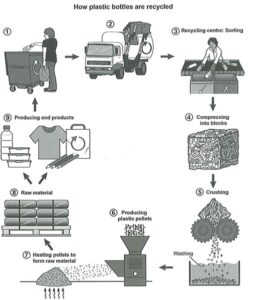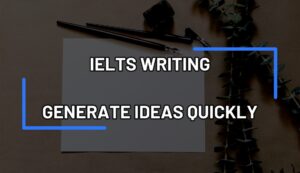The pie charts show the electricity generated in Germany and France from all sources and renewables in the year 2009.
Summarize the information by selecting and reporting the main features and make comparison where relevant.
The pie charts compare the proportions of electricity produced, by source, in Germany and France within the year 2009. The charts show figures for all source types and also details for renewables.
Overall, the total amounts of electricity produced in these two countries were close, but the way energy sources were used show significant differences. Simply put, the Germans made use of conventional thermal energy the most, while it was nuclear power that came first in France. Biomass and wind were the top sources of renewable energy in Germany, whereas in France, the figure for hydroelectricity was overwhelmingly in the majority.
Regarding all sources, Germany and France produced 560 and 510 billion KWH of electricity respectively in 2009. Conventional thermal power was used to generate just under 60% of electricity in the former, while the corresponding figure for the latter was just over 10%. In fact, a little over three-quarters of electricity in France came from nuclear plants, which was well over three times higher than that in Germany. However, both countries used renewable sources the least, with figures in the vicinity of 15%.
In terms of renewable energy produced, biomass and wind each accounted for a little under 40% in Germany; however, the sum of their percentages in France was about half that figure. On the other hand, hydropower was the source of 80% of renewable energy in France, but in Germany, its share was nearly four times less. Finally, geothermal energy was not used in either country, but the proportions for solar stood at 6% in Germany and almost none in France.








